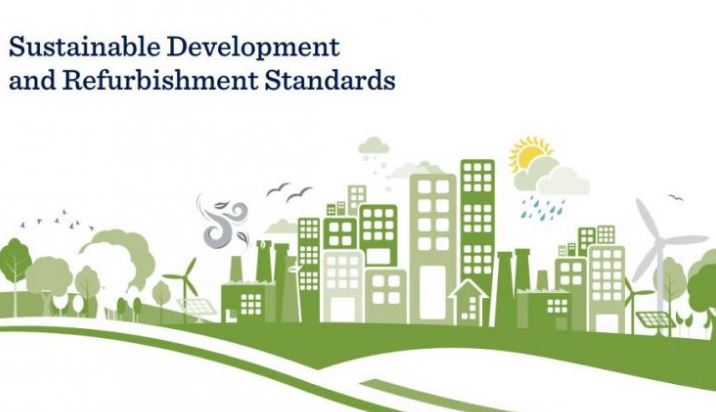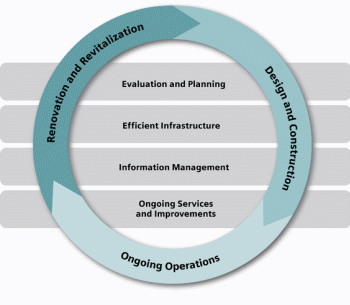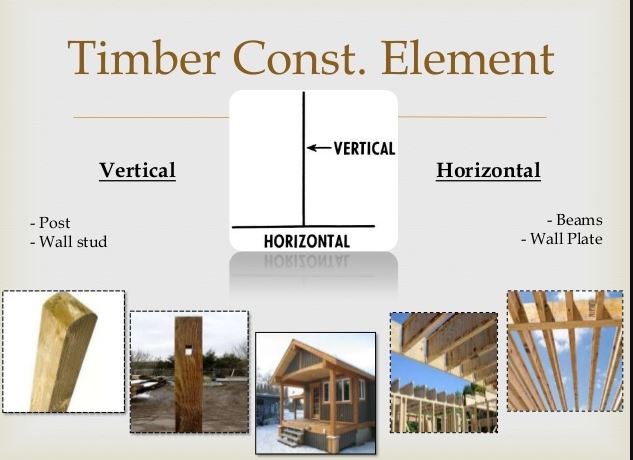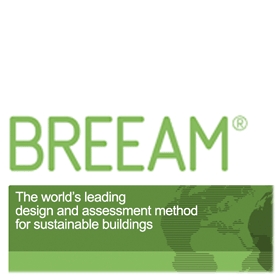This paper aims at discussing the existing limitations in the sustainable refurbishment. By definition, sustainable refurbishment can be defined as the process of improving existing buildings purposely to improve their environmental performance (Pombo, Rivela and Neila, 2016, p. 88). According to architectures, this process entails a maximization of sustainable methods and materials. In these recent times, the most common sustainable refurbishment performed on buildings include the installation of renewable energy sources and improvement on ventilation. Also, recycling material during the refurbishment is regarded as a sustainable refurbishment process because it is environmentally friendly.
In this paper, various suggestions for sustainable refurbishment shall include that are aimed at improving the environment shall be outlined in detail. In this research, a methodology that comprises multiple dimension in the field of architecture and art shall be used. The methodology would put into consideration some of the essential aspects of architecture. This way, a deeper understanding of sustainable refurbishment and the limitations encountered shall be achieved. The multiple dimensions to be used shall relate to a variety of approaches. Among these approaches include building occupancy, environmental, and techno-economic approach (Pombo, Rivela and Neila, 2016, p. 91).
Sustainable development involves some processes that are to benefit various parties in the construction sector. As a result, architects have resolved to measures that reduce energy consumption by refurbishing buildings and fitting them with new facilities. However, in the course of refurbishing buildings for sustainable development, architects encounter lots of limitations. To curb such limitations, new approaches that did not exist in the past have been developed. Also, friendly building evaluation methods and systems have been developed to help in sustainable development. For instance, the methods need to enhance the effectiveness of water among other reasons (Lou, Lee and Welfle, 2017, p. 311). This helps improve the quality of life by a great stride.
Literature Review
Due to the increase in the cost of materials and resources used in the refurbishment of buildings, architectures have opted to maximize on the available resources. This has led to economic investments in Vacuum Insulation Panels (VIPs). In most cases, the VIPs are configured with supplementary insulation. For example, the refurbishment of wall cross-sections of already existing buildings. This strategy of utilizing energy consumption is mostly implemented in the United Kingdom. Architectures have gone an extra mile to identify several aspects that will overcome the limitations existing in the field of architecture.
According to scholars, sustainable methods that are used are in line with the continuous increasing levels of renewable energy (Lou, Lee and Welfle, 2017, p. 317). In the United Kingdom (UK), approximately 500, 000 apartments have undergone renovation. These renovations seek at transforming the buildings into current energy efficiency requirements that meet the modern standard. Currently, new buildings in the UK are energy efficient as possible. In refurbishing buildings, there are some factors to consider. These factors include societal targets for moisture and good indoor setting. In consideration of such factors, a ‘healthy building’ that is environmentally friendly is achieved.
Among the numerous limitations that contributed to inefficiency within the building sector are motivational factors. Most of the buildings constructed in the last decades in the UK are not energy efficient. According to scholars, such houses contribute to high greenhouse emissions. Such houses also result in a waste of energy. Nowadays, both building owners and building occupants opt for minimal energy expenses. This is among the numerous measures of restoration that are building owners are seeking in sustainable development. There is a need to venture into measures that enable sustainable development due to the advantages that result. For instance, it helps improve the environment.
Despite the numerous advantages of refurbishing buildings, there exist challenges that architectures encounter. First, an assessment needs to be performed of the existing condition. In most cases, refurbishment projects require architects to perform both aesthetic and technical assessments before designing measures that are to be used (Lund, Haddadi, Lohne and Bjørberg, 2016, p. 427). From research findings, some architects regard refurbishment of buildings to be challenging as compared to starting a project from ground zero.
As for an already existing project, there is a need for a refurbishment framework that will comply with the existing frame of the project to be refurbished. As a result, more time and effort is required to make refurbishment of buildings a success. In the context of effort, architects need to perform a feasibility study. During the study, the architects are supposed to find out on the advantages of taking part in the refurbishment programs for sustainability development.
Another limitation of refurbishing buildings is that it is mandatory for architects to comply or adhere to the structural components of the building (Lund, Haddadi, Lohne and Bjørberg, 2016, p. 427). This hinders further developments as the proposed constructions need to comply with the technical components of the original building. Also, the cost of refurbishing a building is more expensive than that of constructing a new structure. This is because the actual construction of refurbishing a building comprises of expenses of both the new and old.
To effectively refurbish a building, it is important to take financial risks due to the unforeseen deterioration that may occur during the process. As such, the financial risk is a challenge among architects. This is because most architects concentrate on refurbishing buildings on small budgets. Despite the environmental advantages of refurbishing buildings, more attention needs to be put on sustaining buildings. This way, the potential of reducing greenhouse gas emissions through building refurbishment is achieved (Lund, Haddadi, Lohne and Bjørberg, 2016, p. 429).
Both human-caused and natural disasters affect buildings. It is, therefore, the mandate of architectures to design buildings and other infrastructural structures that can withstand such phenomena. In this context, there are some questions architectures pose before embarking on the process of refurbishing buildings for sustainable development. Examples of such questions include:
- What are the economic benefits of refurbishing a building?
- What are that target areas within the building that are to be refurbished? Is it only the thermal insulation or there exists other refurbishment needs?
- In case of a demolition, what are the adaptive reuse of this building?
- What is the impact of the renovation, demolition or refurbishment to the society?
In answering these questions, the refurbishment of buildings is performed in a manner that is in accordance to sustainable development. Also, such questions act as a pivot in enabling preliminary decisions that are essential in the construction sector. A comparison between a historical landmark and a residential building on the basis of a criterion for limitations prove that historical landmarks possess more (Oregi, Hernandez, and Hernandez, 2017, p. 12). According to scholars, the refurbishment of buildings is mainly performed by sustainable agendas. However, some architectures base their refurbishment programs on economic agendas.
Refurbishing Buildings
Architectures are involved in refurbishing buildings for various reasons. Despite refurbishing buildings enabling building restoration, it also enables heritage restoration. For instance, in the UK, reconstruction of historical buildings is a common measure of restoring the country’s heritage restoration. However, this differs in other countries. For example, in the United States, the reconstruction of historic buildings is not necessarily (Oregi, Hernandez, and Hernandez, 2017, p. 14). By doing this, the United States saves finances.
Architectures are striving to overcome the limitations of refurbishing buildings because of the environmental aspects that result from the process of sustainable development. For example, the construction of new high-performance buildings positively contributes to the initiatives set for the global green agenda. However, there are sustainability requirements that contractors need to meet to construct energy efficient and environmentally friendly buildings. According to scholars, architectures need to base their choices on environmental and economic evaluations (Noori, Saruwono, Adnan and Rahmat, 2016, p. 253). Failure to which the refurbishment of buildings would not be in accordance to the set sustainable refurbishment development.

According to scholars, building sustainability assessments is exceptional. The exception is in the sense of result objectivity (Noori, Saruwono, Adnan and Rahmat, 2016, p. 256). Factors that contribute to this exception include the usage precision of the resources used during refurbishment and elimination of inaccuracies of methods previously used for sustainable refurbishment development. Despite the pre-study architects take, there is a need for an evaluation of the chosen approach by use of certain criteria to find out the efficiency of the approach to be implemented. For instance, in the UK, the BREEAM method is used during the assessment of qualitative indicators. However, the BREEAM approach depends on factors as the qualification of the experts to be involved in the refurbishing of buildings for sustainable development (Noori, Saruwono, Adnan and Rahmat, 2016, p. 257).
Refurbishing buildings have been presented in various assessment criteria. These include:
- Sustainability of management: This enables close supervision of the sustainability practices to be performed. For example, the sustainability of work planning.
- Appropriateness of materials: This entails all the elements necessary for construction. For example, the insulating items to be used during refurbishing buildings.
- Health and welfare: In this context, there are a number of factors that need to be considered to enable efficient sustainable development. Examples include indoor air quality and insulating items such as sound insulating items.
- Energy: To conserve energy, buildings are refurbished with devices such as emitting technologies.
- Pollution: The process of refurbishing buildings need to be environment-friendly. This means that the process should not contribute to pollution but instead initiate measures that will help curb further pollution.
- Water availability: Designs aimed at enabling water conservation are considered during the refurbishment of buildings. Technology has enabled architects to install water leakage detectors in houses to help in conserving water. Another measure of conserving water is the possibility of water recycling.
- Innovations: Architects install devices that are aimed at making life easier. Examples of innovations that have improved the quality of life include integration options.
Therefore, refurbishing a building for sustainable refurbishment development is bound to a number of principles. Putting into consideration these principles helps overcome the limitation of sustainable development. For instance, the use of life cycle framework and the recognition of the complexity of the sustainability concept (Turner et al., 2016, p. 199). Also, putting into considerations such frameworks allows the architects to easily relate to the crucial aspects of the decision-making process such as the social and economic aspects.
Possible Problems and Potential Solutions
The problems encountered in the construction sector can be solved in various ways. Nowadays, the advancement of technology has eased problems of a minimum magnitude that architects could not get rid of in the past. For instance, site selection was a major problem in the past years. By use of modern technology, architects can locate better sites for refurbishing. Also, the advancement of technology has made it possible for manufacturing companies to manufacture facilities that are energy efficient and environmentally friendly. Yearly, new designs are designed to replace the existing facilities.
In this context, there exist drawbacks during refurbishing that need to be well omitted for efficient, sustainable development. For example, the omission of economic-financial criteria group is mostly viewed as a drawback in the context of sustainability. An important aspect in the refurbishing process is the appropriate use of multi-criteria assessment approaches that have a positive impact to the environment. Different scholars explain multi-criteria assessment approaches in their different ways. This is because of the difference in situations and circumstances. Multi-criteria can either be maximizing or minimizing. It only depends on the levels of receiving objective results. Therefore before embarking on refurbishing buildings for sustainable development, one needs to figure out the levels of the receiving objective results.
Another problem that results from sustainable development is the availability of enough energy that is to be used throughout the process. From research findings, the energy used in refurbishing buildings for sustainable development is the influence of the energy towards the climate (Turner et al., 2016, p. 197). That is, it influences climate change. Before architects choose an approach to use in refurbishing buildings for sustainable development, the merits and demerits of the approach need to be researched. It is from the study that the process of refurbishing buildings for sustainability development becomes efficient.
Diverse Approaches to Sustainable Refurbishment
To avoid the challenges that result from the refurbishment of buildings, architects need to sustainable design strategies. An example of such an approach is to minimize the energy consumption of structures (Pombo, Rivela, and Neila, 2016, p. 92). However, there some factors that need to be considered before settling on a sustainable approach. The approach needs to include the aspects of economic, social, and ecological value. In the past times, sustainable development on buildings was based on the physical capacity. However, due to the advancement in technology, diverse approaches have emerged. These approaches depend on a number of factors. For instance, the size of the building and another local context such as the location of the building (Noori, Saruwono, Adnan and Rahmat, 2016, p. 257). Diverse approaches to sustainable refurbishment range from various frameworks. These frameworks range from methodological to theoretical. According to scholars, some architects base their frameworks in a market-available assessment tool aspect.
An example of a methodology is the Life Cycle Assessment (LCA) methodology. This kind of methodology is useful in the process of estimating the environmental impact of refurbishing a building. Therefore, the Life Cycle Assessment (LCA) is a methodology that best defines the environmental assessment of buildings due to its efficiency. An advantage of using the LCA methodology is that it allows architects to assess the global environmental impact, right from the relevant data. Another advantage of using the LCA methodology is that it makes it easier for building owners to have an accurate description of the entire structure including the costs to be incurred. To architects, the LCA methodology allows ease of shift of impacts. Normally, the impacts are the improvements of refurbishment.
Despite the advantages accrued from the Life Cycle Assessment (LCA) methodology, there exist some limitations. For example, the unavailability of adequate data that need to be used during refurbishing building. Due to this unavailability of data, the uncertainty of results is attained. Also, too much effort is required to describe a building in an LCA methodology context.
Nowadays, various environmental assessment tools are commonly used to evaluate sustainable buildings (Lund, Haddadi, Lohne and Bjørberg, 2016, p. 432). Various organizations develop different environmental assessment tools that best fit their conditions. The limitations to environmental assessment tools include site selection and the impact the assessment tool has on the ecology. From research findings, it is evident environmental assessment tools mitigate the ecological impact. Also, due to the difference in the environmental assessment tools across different organizations, scholars regard the assessment tool as an unsustainable tool because of the difference in conditions. Another limitation that emerges from environmental assessment tools is that it occasionally undermines certain themes that are essential during the refurbishment of buildings.
Conclusion
In conclusion, refurbishment of buildings is an effective measure of enabling sustainable development. Also, the refurbishment of buildings is an effective way of addressing the challenge of climate change (Pombo, Rivela and Neila, 2016, p. 88). As discussed earlier, there exist limitations in refurbishing buildings. For instance, architects need to adhere and comply with already existing structural components of the building. Due to such adherence, the cost of refurbishing buildings is expensive as compared to constructing structures from ground zero. Another limitation encountered in the refurbishment of buildings is the potential risks that emerge.
If well handled, refurbishment of buildings can be of great importance both economically and in environmental agendas. Different approaches to sustainable development have different limitations. For instance, the Life Cycle Assessment (LCA) methodology is the unavailability of data. As a result, architects are unable to find the uncertainties of the data. The environment assessment tool is limited to site selection. Therefore, by use of the environmental assessment tool, architects are unable to design measures due to the factor of site selection effectively.
References
Lou, E.C., Lee, A. and Welfle, A., 2017. Greenhouse gases (GHG) performance of refurbishment projects–Lessons from UK higher education student accommodation case studies. Journal of Cleaner Production, 154, pp.309-317.
Lund, O.B., Haddadi, A., Lohne, J. and Bjørberg, S., 2016. Sustainable Planning in Sustainable Refurbishment Projects–An Early Phase Evaluation. Energy Procedia, 96, pp.425-434.
Noori, A., Saruwono, M., Adnan, H. and Rahmat, I., 2016. Conflict, Complexity, and Uncertainty in Sustainable Refurbishment Building Projects. In InCIEC 2015 (pp. 251-258). Springer, Singapore.
Oregi, X., Hernandez, P. and Hernandez, R., 2017. Analysis of life-cycle boundaries for environmental and economic assessment of sustainable refurbishment projects. Energy and Buildings, 136, pp.12-25.
Pombo, O., Rivela, B. and Neila, J., 2016. The challenge of sustainable building renovation: assessment of current criteria and future outlook. Journal of Cleaner production, 123, pp.88-100.
Turner, K.G., Anderson, S., Gonzales-Chang, M., Costanza, R., Courville, S., Dalgaard, T.,
Dominati, E., Kubiszewski, I., Ogilvy, S., Porfirio, L. and Ratna, N., 2016. A review of methods, data, and models to assess changes in the value of ecosystem services from land degradation and restoration. Ecological Modelling, 319, pp.190-207.
Relevant Blog Posts
The Impact Of Sustainable Development On The Construction Industry Faced With Economic And Legislative Challenges
The Effectiveness of Life Cycle Costing in Sustainable Construction
Construction Management Dissertations
Did you find any useful knowledge relating to limitations of sustainable refurbishment in this post? What are the key facts that grabbed your attention? Let us know in the comments. Thank you.




